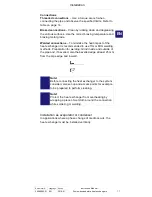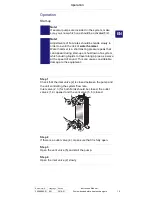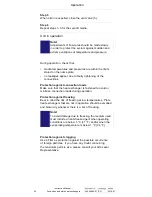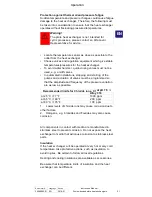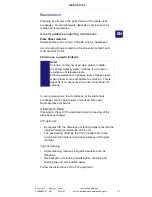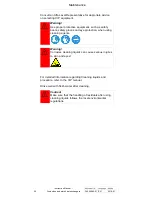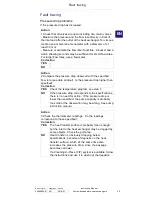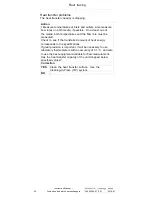
Operation
Protection against thermal or/and pressure fatigue
Sudden temperature and pressure changes could cause fatigue
damage to the heat exchanger. Therefore, the following must
be taken into consideration to ensure that the heat exchanger
operates without
fl
uctuating pressures/temperatures.
Warning!
The plate heat exchanger is not intended for
cyclic processes, please contact an Alfa Laval
Representative for advice.
• Locate the temperature sensor as close as possible to the
outlet from the heat exchanger.
• Choose valves and regulation equipment which give stable
temperatures/pressures for the heat exchanger.
• To avoid water hammer, quick-closing valves must not be
used, e.g. on/off valves.
• In automated installations, stopping and starting of the
pumps and actuation of valves must be programmed so
that the amplitude and frequency of the pressure variation
are as low as possible.
Recommended limits for Chloride ions, Cl
-
at pH 7.5
1 2
Alloy 316
at 25 °C / 77 °F
1000 ppm
at 65 °C / 149 °F
200 ppm
at 80 °C / 176 °F
100 ppm
1.
Lower levels of chloride ions may cause corrosion due to
other factors.
2.
Halogens, e.g. bromides and
fl
ourides may also cause
corrosion.
All components in contact with media are manufactured in
stainless steel to prevent corrosion. Do not expose the heat
exchanger to media that will cause corrosion to stainless steel
parts.
Insulation
If the heat exchanger will be operated at very hot or very cold
temperature, take protective actions, such as insulation, to
avoid injuries. Be certain to follow all local regulations.
Heating and cooling insulations are available as accessories.
Be aware that temperature limits of insulation and the heat
exchanger can be different.
Document ID
Language
Edition
34566980-01 EN
2018-01
Instruction Manual -
Fusion-bonded plate heat exchangers
21
EN
Содержание AlfaNova 14-76, AXP AN
Страница 2: ...www alfalaval com fhe manuals ...
Страница 6: ......











